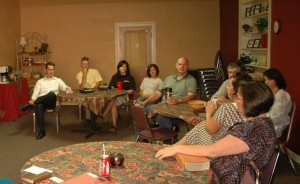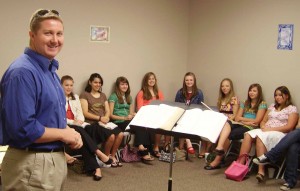 Hook, Book, Look and Took remain excellent handles for structuring, developing, delivering and evaluating a Bible lesson! These four simple words were first introduced to me during my seminary days through a required reading book by Lawrence Richards, entitled Creative Bible Teaching. (Lawrence O. Richards, Creative Bible Teaching, Moody Press, 1976.) If we are going to call it Bible study, you must guide the class to “grasp” the Word of God. Get into the Book!
Hook, Book, Look and Took remain excellent handles for structuring, developing, delivering and evaluating a Bible lesson! These four simple words were first introduced to me during my seminary days through a required reading book by Lawrence Richards, entitled Creative Bible Teaching. (Lawrence O. Richards, Creative Bible Teaching, Moody Press, 1976.) If we are going to call it Bible study, you must guide the class to “grasp” the Word of God. Get into the Book!
HIT A LICK. My father often used the words, “he never hit a lick” in referring to someone who totally missed the point or failed to accomplish the task. Bible study preparation begins with prayer and a personal study of the text. If you are to guide your group to carefully read, understand a passage and apply it to their lives then you must first grapple with the content and personalize it. Once you have personalized the passage you can prepare to guide the class to “grasp the truth.” The lesson commentator (curriculum writer) may suggest a teaching aim, learning goal or intended outcome, but if the passage does not “grip” you with a personal message then it will be difficult for you to hit any target during class time.
PREPARATION. Good lesson preparation requires setting appropriate time to guide each critical element of the class session! The Book, the second element in a life-changing lesson process, will require more time than the other three elements. After a brief Hook you should be ready to take the class to the truth of the scripture passage but remember you still have application, which we will refer to as the Look; and the Took, or the invitation, ahead of you. I believe there are three critical parts to this element of the lesson.
- Read the text well. Regardless of whether you are teaching verse by verse or dealing with the passage as a whole, put some thought into reading the text. Perhaps you could enlist a reader in advance who becomes a critical part of the teaching process by using appropriate voice inflection and emphasis as each verse is presented. Let the Word speak!
- Present the background. No passage or scripture really stands alone and therefore, understanding of your text requires some knowledge of the author, setting, context, theme of the book and so forth. Again, great teaching does require disciplined time management.
- Develop an understanding of the text. Lecture moments are appropriate here but don’t just lecture. Present the content and the key points with creativity knowing that the scripture has the power to change lives. Teaching does require group participation so I urge teachers to plan for and allow spontaneity and interaction throughout the session but I also suggest that a good leader will safeguard this element of the lesson carefully. You will want more interaction when the time comes for application. If you have given adequate time to personal preparation, you are a primary source of information at this point. Don’t give in to chasing rabbits! Make sure you take the class to the truth of scripture.
Again, before the class can apply the passage to their own life, it will be essential for them to “grasp the truth.” Make sure you take them to the Book and they come away knowing what the Word of God says.
_____________________________
Gary Bearce serves as the Sunday School Specialist for the Alaska Baptist Convention.



